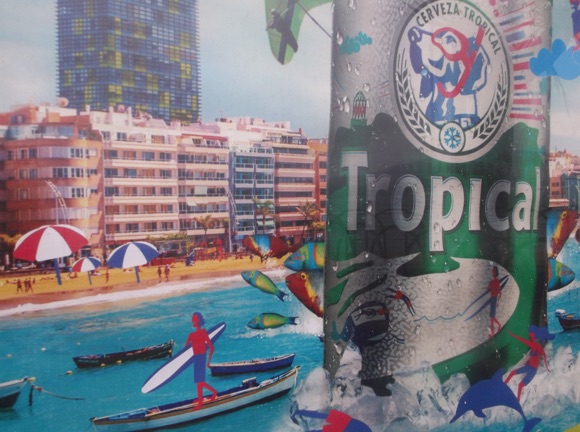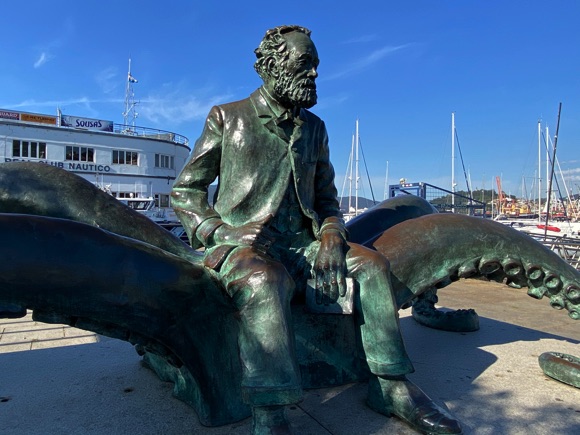Teams, tales and tips – a guide to the local game
Romantic, romanticised Seville contains all the clichés of Andalusia – and therefore of Spain itself. Bullfighting, flamenco, tapas bars and fervent religious processions, you can find them all here. The football, too, is just as fierce, the local rivalry between Betis and Sevilla more head-on than anywhere else in Spain.
And what could be more head-on than penalty shoot-out between the two in Europe? Betis must have thought all their dreams had come true when they won 2-0 at Sevilla’s Sánchez Pizjuán in the first leg of a Europa League tie in 2014.
An early goal from ex-Arsenal winger José Antonio Reyes, and Sevilla were soon back in it at Betis. A late and crucial one by Carlos Bacca, and the game duly went to extra-time – and penalties. Despite missing their first spot kick, Sevilla then kept their nerve at the Benito Villamarín.
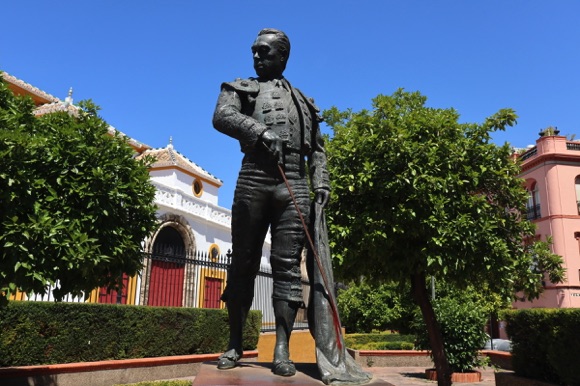


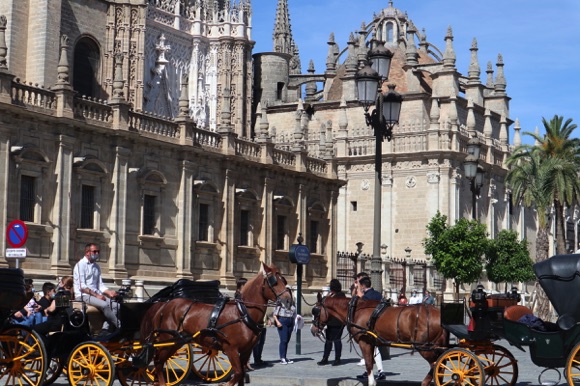
Both faced each again at the highest level in 2015-16, thanks to the Béticos gaining promotion in 2014-15. Back then, the contrast with Sevilla was still stark. While Betis were topping the Segunda, Sevilla were winning the Europa League for the second season in succession. By now, they have claimed a record six trophies, the most recent a ding-dong 3-2 win over Internazionale in 2020.
Only one league placing separated the city rivals in 2022, with Betis qualifying for Europe anyway by dint of a Copa del Rey victory over Valencia that spring.
The setting was Seville, but neither the Sánchez Pizjuán nor the Benito Villamarín but La Cartuja, the island that staged Expo 92, where Spanish cup finals will be played until 2023. This somewhat remote, soulless site also stepped in when Bilbao dropped out of co-hosting Euro 2020. While Bilbao’s ground is right in town, the very isolation of La Cartuja proved ideal during the pandemic.
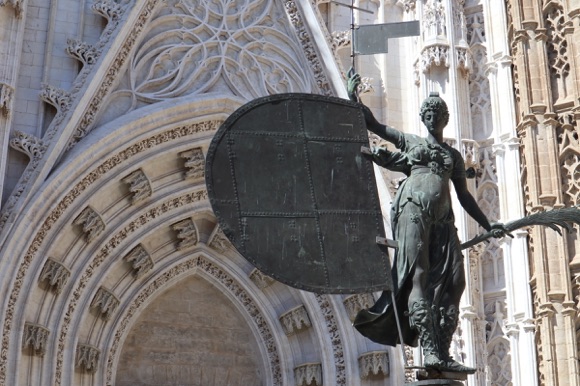

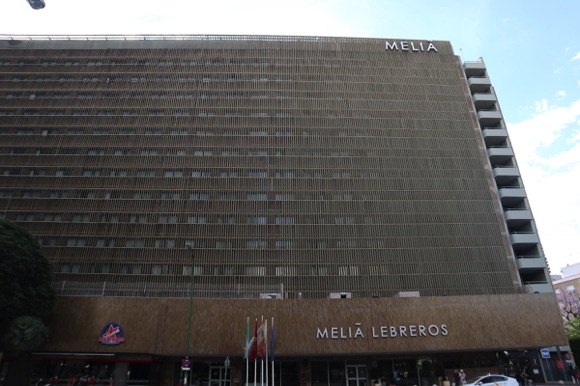
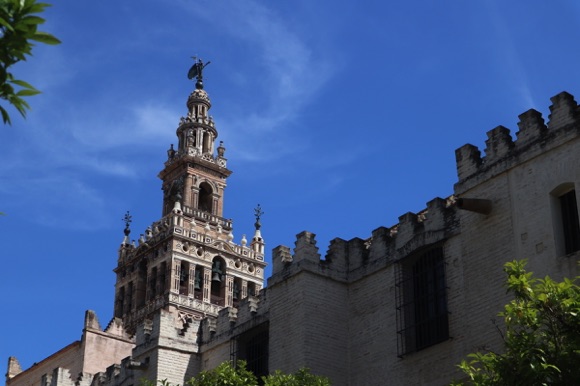
The first organised football match in Spain took place in Seville, in 1890, two teams of mainly local expats working in the mining and sewage industries. The visitors came from nearby Huelva, considered Spain’s oldest club.
Some of these expats continued to play pick-up games in Seville, where a certain José Luis Gallegos found them in the early 1900s. In 1905, Gallegos founded Sevilla, their directorship taken from the land-owning classes that ruled Andalucia. When one director refused to hire a local factory worker at the club there was a revolt – and Betis were founded by dissident members.
In 1914, Betis merged with Sevilla Balompié and King Alfonso XIII bestowed the Real (‘royal’) title. The first derby took place in October 1915, a 4-3 win for Seville. A 2-2 draw on New Year’s Day soon after was set against a backdrop of disputes over land reform and Andalucian autonomy, and a violent game set the tone for the next century or more.
In 2007, coach Juande Ramos was knocked out by a missile and Betis had to play three home games elsewhere. In 2022, a metal pole chucked at a Sevilla player during a cup tie at Betis forced the fixture to be postponed and played the next day.



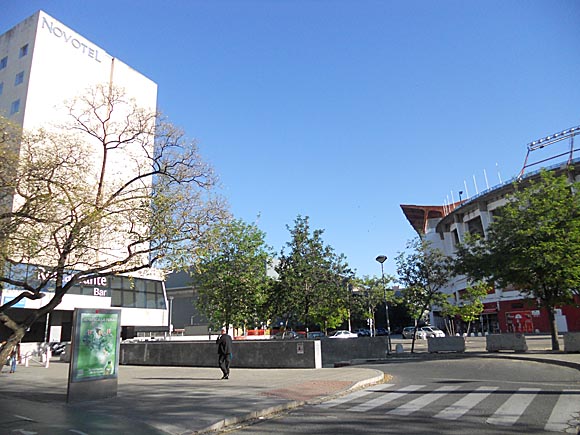
Although both clubs have moved around town since their early days at the Prado de San Sebastián, their deep divisions are typified by their current respective geographical locations. Seville’s Rámon Sánchez Pizjuán – opened, of course, with a derby defeat to Betis – is in the commercial district of Nervión, surrounded by fast avenues and a modern-day shopping mall.
Betis are in working-class Heliópolis, to the south. The Estadio Benito Villamarín only recently lost its status as a monument to megalomaniac former club owner Manuel Ruíz de Lopera, who refused the offer of a ground share when a neutral venue was built on La Cartuja as part of Seville’s bids to host the Olympics.
Seville sit on valuable real estate and have already sold much of it around the ground. This failed to impress Betis and the only football the originally named Olympic Stadium staged for many years was the UEFA Cup final of 2003, which saw a peaceful invasion of the city by 80,000 Celtic fans.
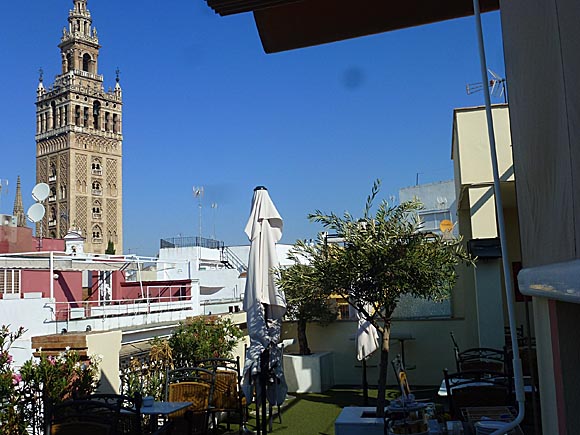
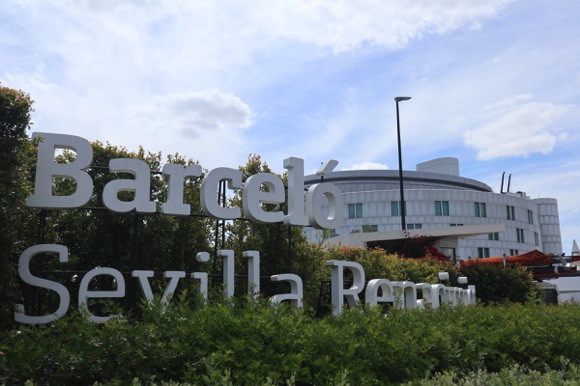
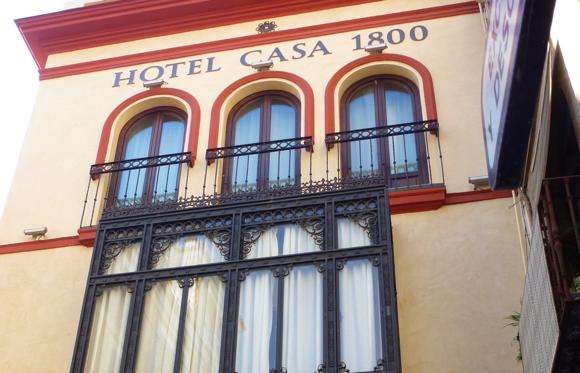
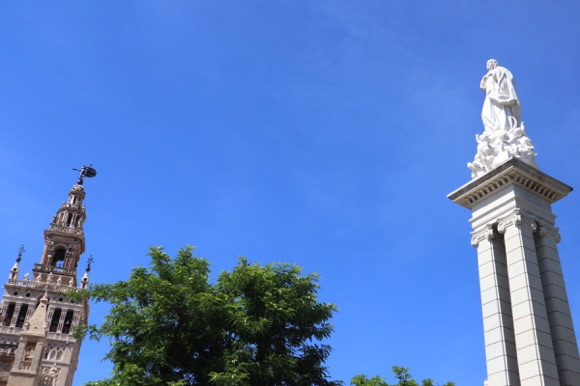
Their award-winning exemplary behaviour was even more remarkable considering the late 3-2 extra-time defeat by José Mourinho’s Porto, and the complete disappearance of local taxi drivers that evening. Not that Seville has a good reputation as far as staging major events is concerned.
After one of the greatest World Cup matches of all time, the epic semi-final of 1982 between France and West Germany at the Sánchez Pizjuán, players of both sides were forced to sit at Seville Airport for hours while planes came and went.
Nevertheless, the Spanish national team, before it went on to conquer the world, swore by Seville, either at Betis or Sevilla. This talismanic tradition began with a freak 12-1 win over Malta in 1983 that allowed La Selección to qualify for Euro 1984. Spain went on to win 20 of their next 23 qualifying matches here, until the Spanish FA decided to move host venues around the country.

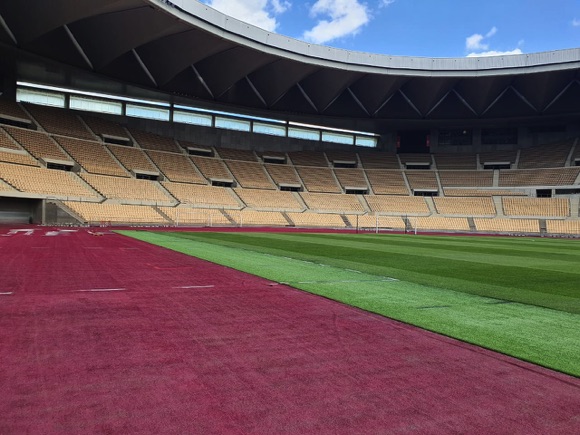

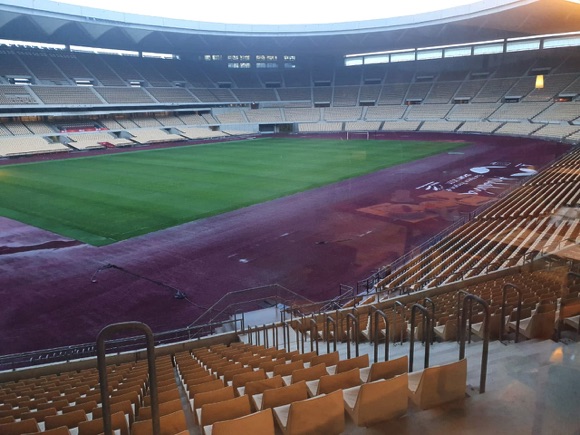

With La Cartuja now back in favour, Spain came back to Seville with a bang in 2020, thumping Germany 6-0 in an echoing, empty stadium. At least Euro 2020 group games proved lively despite crowds being limited to 11,000.
A year later, Seville witnessed a mass invasion of football fans when populist sides Rangers and Eintracht Frankfurt brought an estimated 150,000+ to the city for the Europa League final of 2022.
This time, the venue was the Sánchez Pizjuán but again, organisation was poor. Trouble was kept to a reasonable minimum, considering the numbers, the heat and the beer consumption. Nonetheless, Betis fans had further reason to regret the 121st-minute deflection that sent their club out in an earlier round, and the Germans on their way to Seville.
Getting Around
Arriving in town, local transport and timings

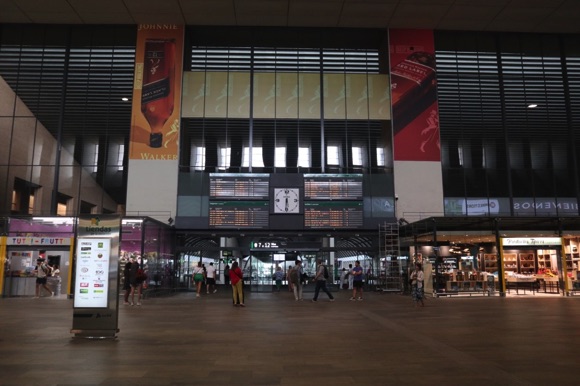
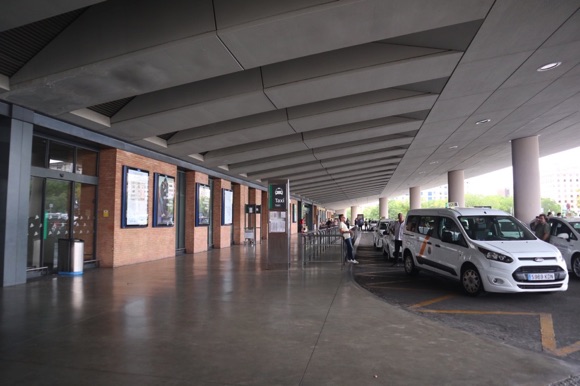

Seville’s San Pablo Airport is 10km (six miles) east of town. EA Airport buses (€4, every 30mins, journey time 35mins) run to city-centre bus hub Plaza de Armas, via Santa Justa station, terminus of the AVE train link with Madrid (2.5hrs).
A taxi (+34 954 580 000) to town carries a flat fare of €22-€25 depending on time of day/night.
A one-line metro system (€2.70-€3.60, day pass €4.50) and TUSSAM buses (€1.40, day pass €5, 3-day €10) comprise the city’s transport network.
Where to Drink
The best pubs and bars for football fans
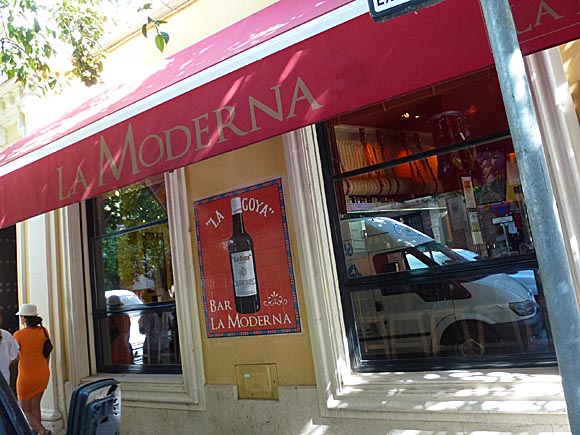
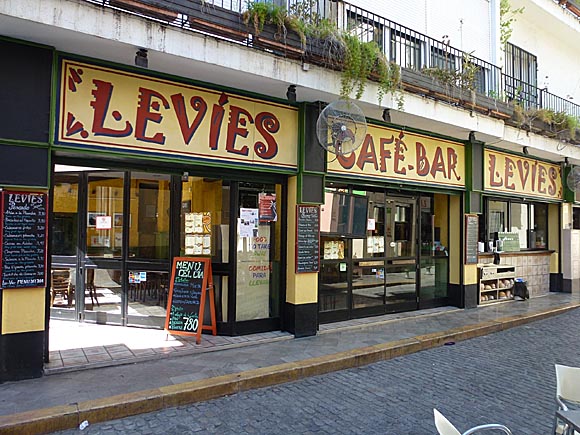



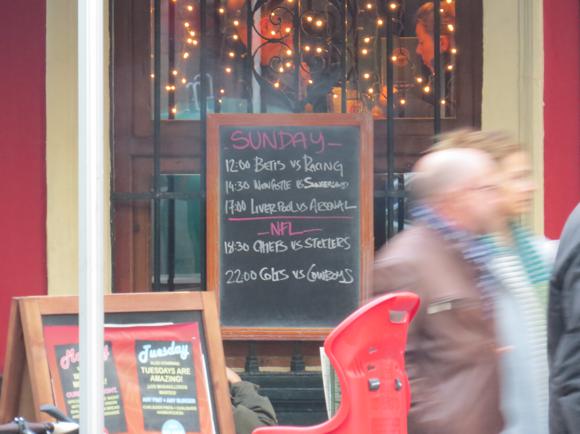
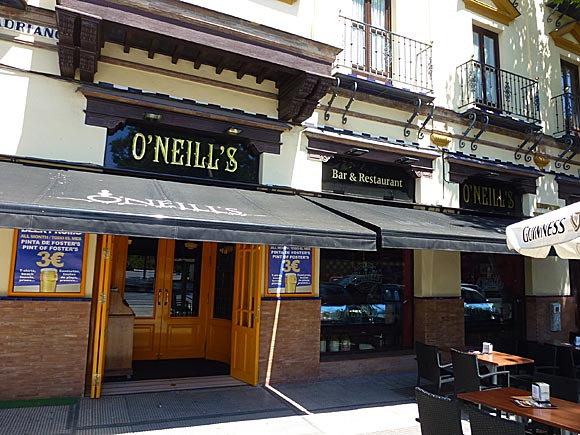


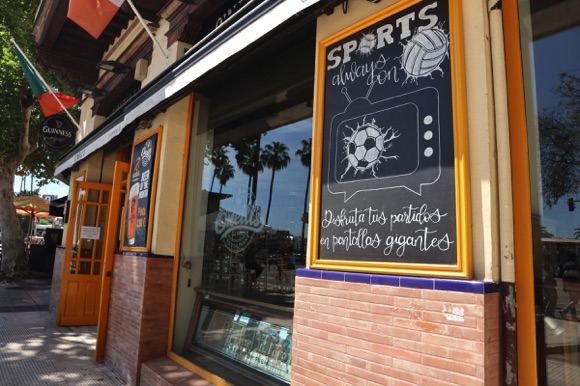

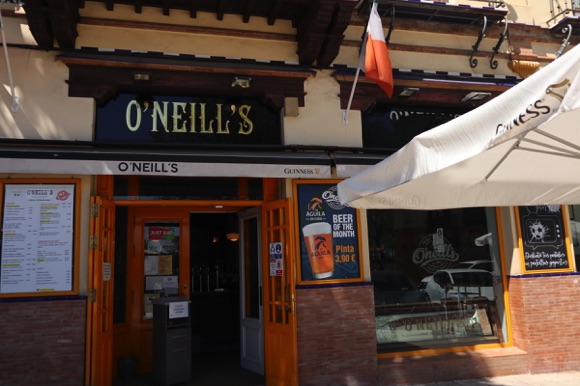
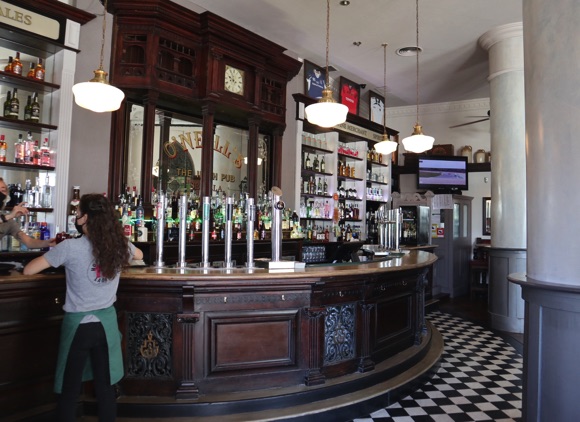


Tapas bars are essential to Seville. The narrow streets of the Santa Cruz and Triana districts are lined with them, traditional tiled places that offer local Cruzcampo beer and relief from the relentless Andalucian sun.
Typical of the genre is the Bodega Santa Cruz (Calle Rodrigo Caro 1A), while nearby Bar La Moderna (Calle Mateos Gago 7) is popular spot for TV football.
Café Bar Leviés (Calle San José 15) is another TV-football destination, with a huge screen and seats outside. Taberna El Papelón is a local, six-branch chain of tapas bars, handy for a quick bite.
The main football-focused expat places in town are the Merchant Pub near focal Plaza de Armas, and O’Neill’s by the bullring, with a branch in Madrid. Close by, C/Adriano, is The Clan, with its carefully poured Guinness and shelves of whiskies.
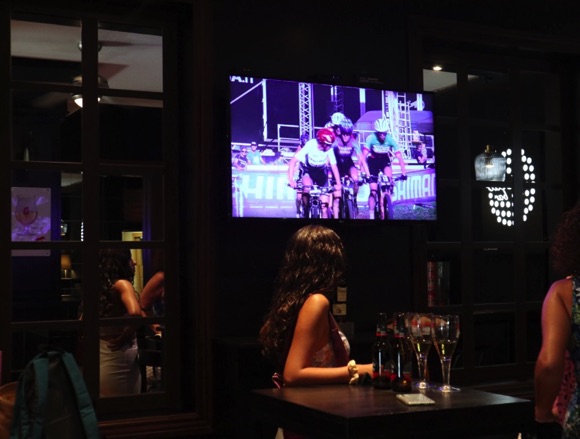
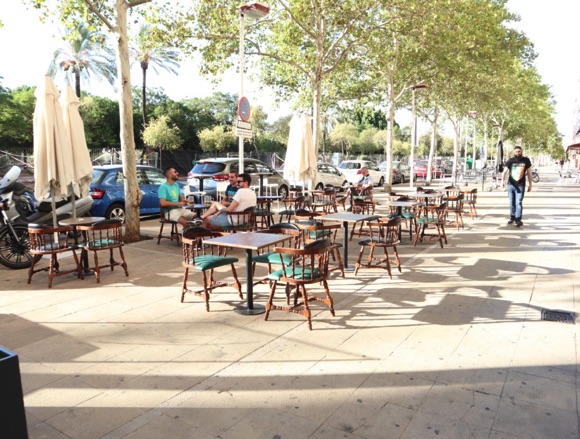

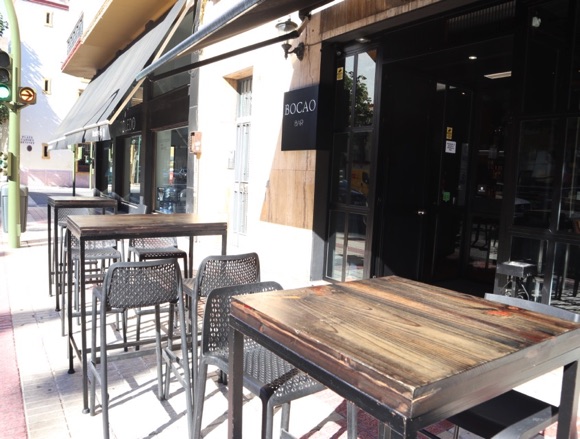



By the waterfront, close to the crossing over to La Cartuja, Mc Gregor Irish Tavern is another pub favourite, with a pull-down screen for big matches, table football, popular pizzas and lashing of the black stuff.
More contemporary in style, within easy reach of Santa Justa station, the Bocao Bar on Calle Recaredo goes big on champagne and quality spirits but also pool, table football and TV sport. There’s live music, too.
Close to main Plaza Nueva, the Cervecería Internacional is a haven for beer lovers, as its name suggests. Belgian and German brews dominate the global selection, served in their respective glasses, but you’ll find a label from pretty much everywhere. No TV but plenty of supping.
Where to stay
The best hotels for the stadium and city centre

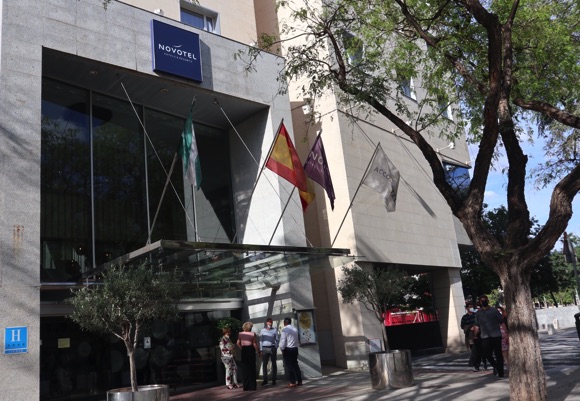
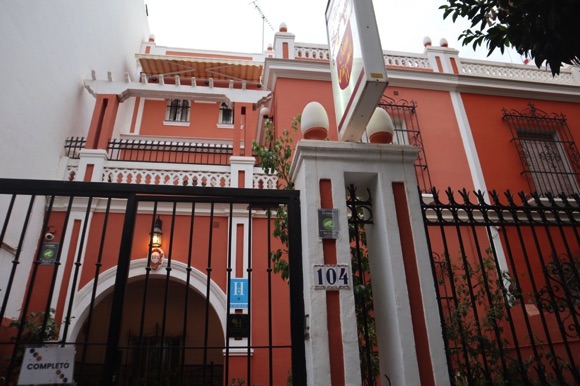
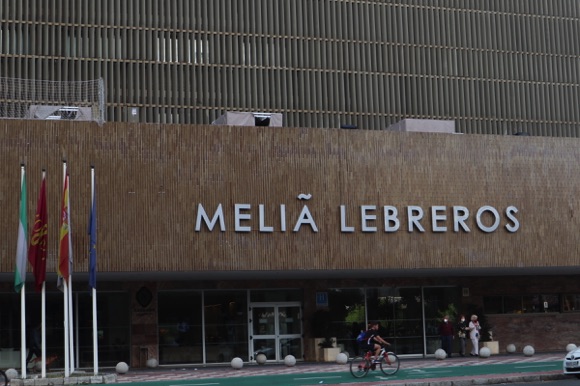
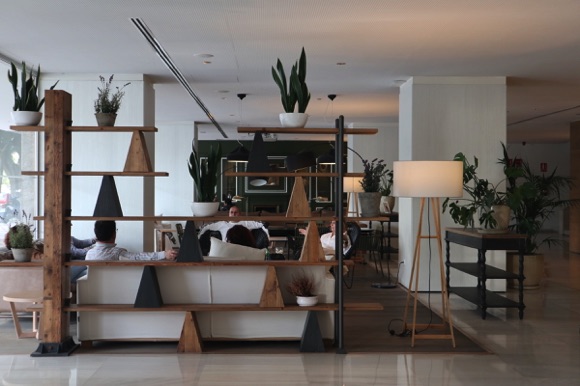

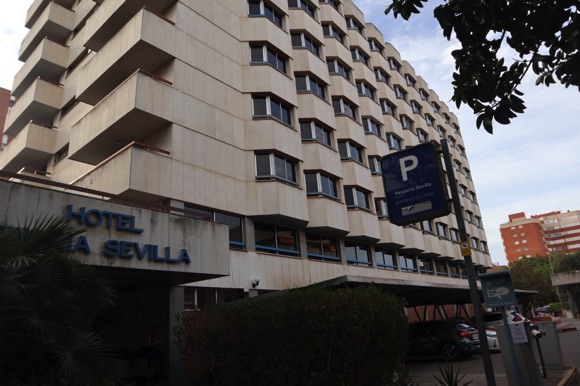
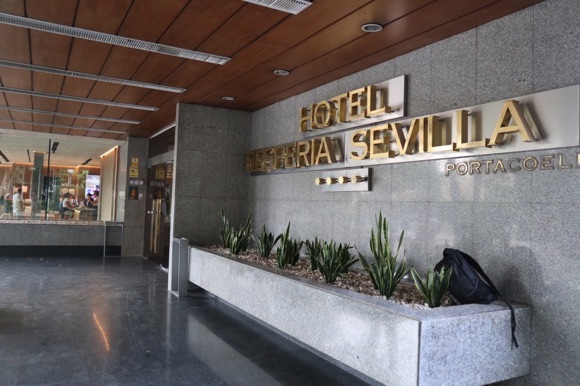

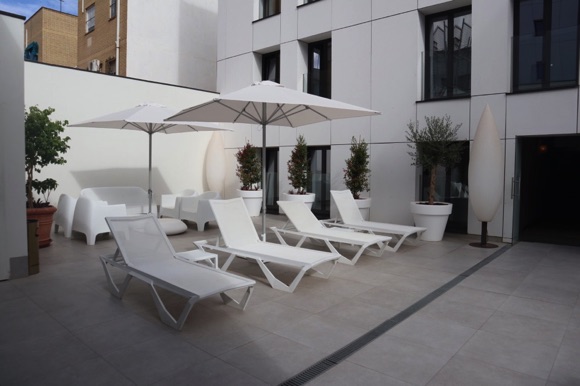


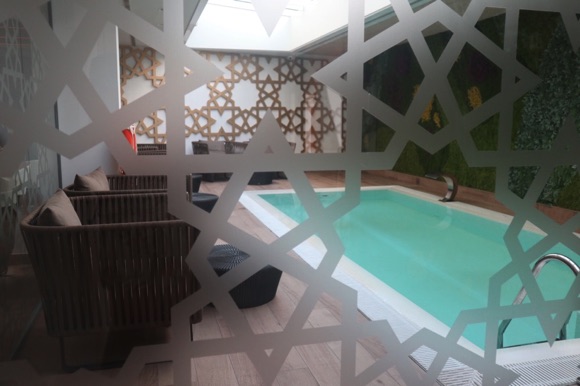
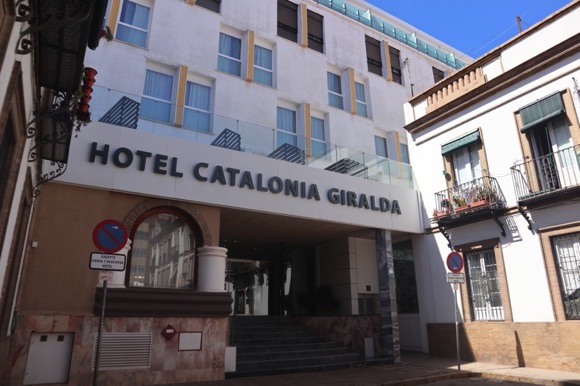
Seville Tourist Office has a comprehensive directory of hotels and prices. Little will be available during the two main festivals of Semana Santa (Easter) and the April Fair.
The Sánchez Pizjuán features business-like four-star Novotel Sevilla right alongside, with its bar, seasonal pool and paid-for parking. Also close and in the same price bracket, the Meliá Lebreros has a pool set in greenery, a gym and restaurant.
In the cheaper range but still close to the stadium, the Hostal San Vicente II near Gran Plaza metro fills a characteristically Andalusian house, revamped in 2010, with simple but comfortable rooms. Near Nervión metro, and so even more convenient for the Sánchez Pizjuán, the Hesperia Sevilla offers spacious single rooms with balconies plus a spa and gym.
On the Santa Justa side of the stadium and ideal for both station and stadium, the Virgen de los Reyes provides four-star accommodation at discount prices through direct booking, quality breakfast if required. Also handy for Santa Justa, the Hotel Catalonia Giralda has a pool and reasonably priced singles and doubles.



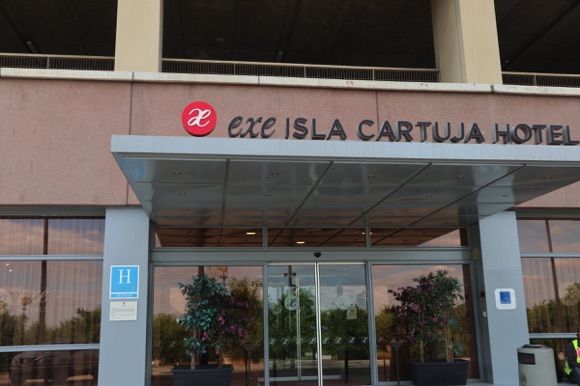




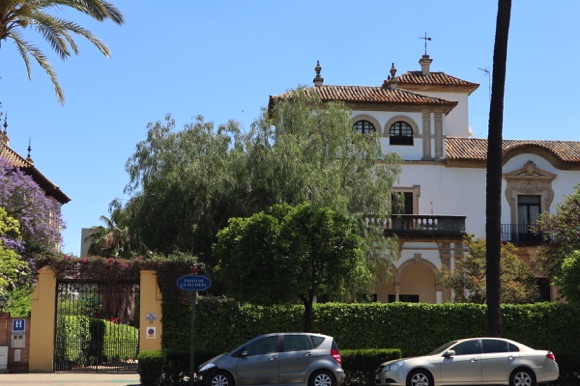


Staying by the Betis stadium means that you’re quite out of town but the four-star Silken Al-Andalus Sevilla can offer a pool, gym and more than 600 rooms. It occasionally offers match packages of superior room and ticket to the Betis game. Even closer is the Villa de la Palmera, elegant but affordable, with 12 rooms and poolside relaxations.
For something a little individual, five minutes’ walk from the stadium, the Hotel Holos was built to host visitors to the 1929 Ibero-American Exhibition. Set in greenery, it offers bike rental.
If you’re going to a game at La Cartuja, several hotels were built for the Expo and other attractions on the island, starting with the five-star Barceló Sevilla Renacimiento just after you cross over from the mainland, with its sleek design and cool pool.
Right by the stadium, the four-star Hotel Exe Isla Cartuja overlooks the arena, its restaurant handy pre- and post-match.
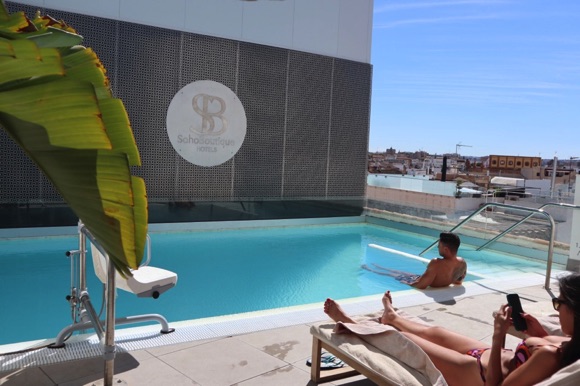




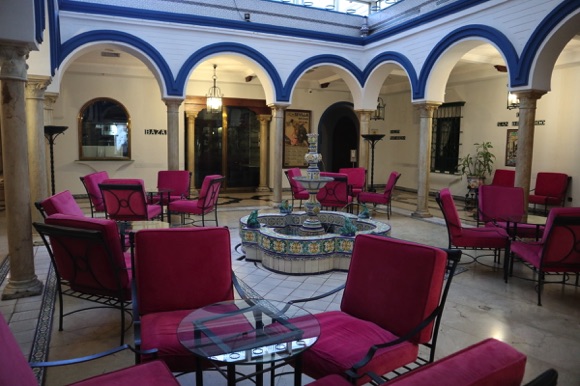
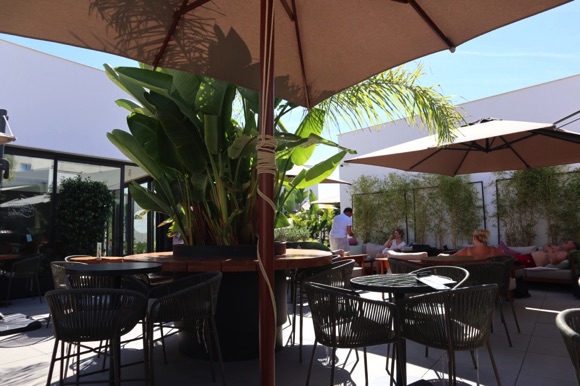
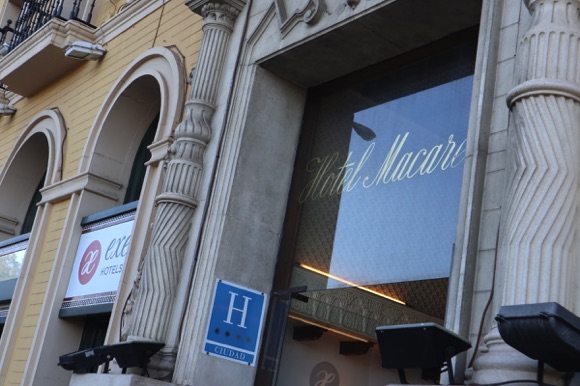

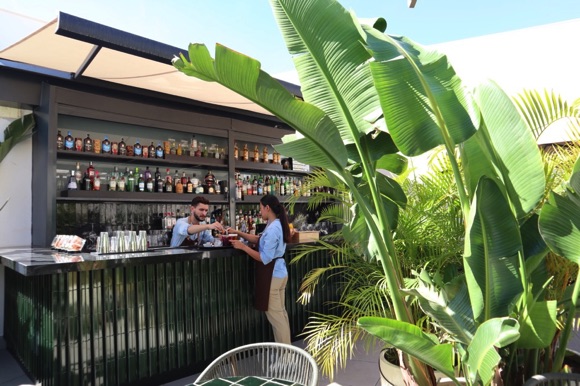




On the river side of the city centre, the Hotel Sevilla Macarena features an outdoor pool and 300+ rooms, handily located for La Cartuja and the Sánchez Pizjuán.
In town, boutique options include the Casa 1800, the Palacio Alcazar, the converted 18th-century residence of American painter/bullfighter John Fulton, and, on Calle Segovia, the Fontecruz.
Near the cathedral, the Doña María Sevilla offers panoramic views of city landmarks from its roof terrace, where an outdoor pool operates mid-April to the end of September. By La Giralda, the Soho Boutique Catedral also offers a rooftop pool and bar
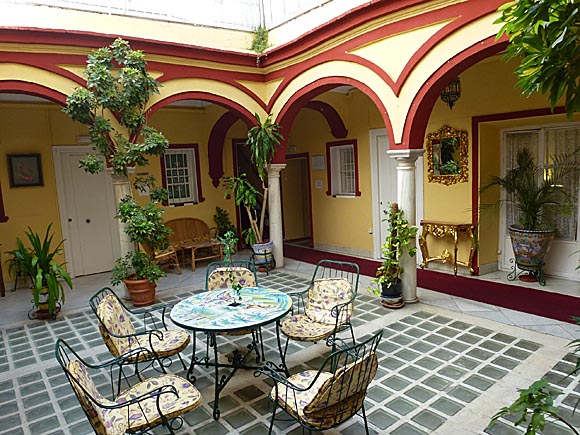

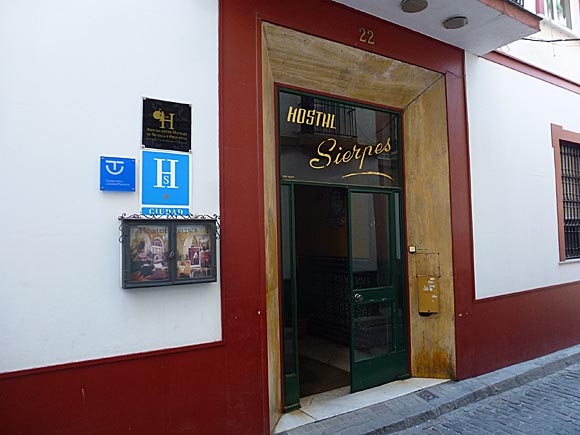

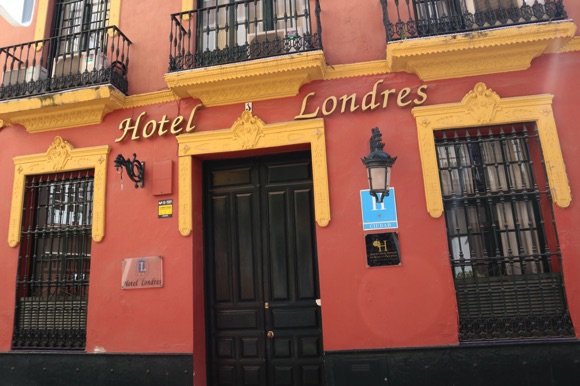

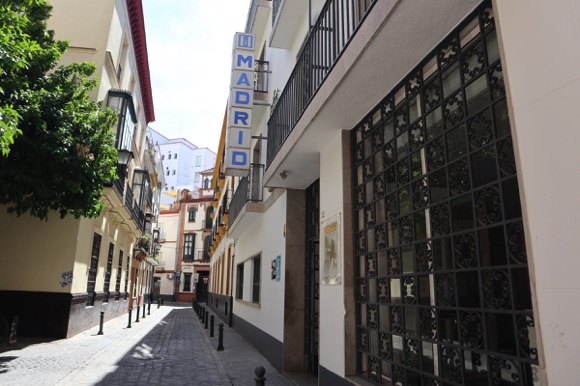

For old-school, with a pub attached, the Hotel Inglaterra has been in business in since 1857. Affordable Hostal Sierpes is set around a pretty courtyard.
For really cheap stays in town, the Hotel Madrid and the nearby Londres should fit the bill.
Also close by, handy for the main square and bus hub it’s named after, the NH Sevilla Plaza de Armas looks pretty swish after its 2019 revamp, its rooftop pool, gym and cocktail bar providing additional reasons to stay, along with location.

















